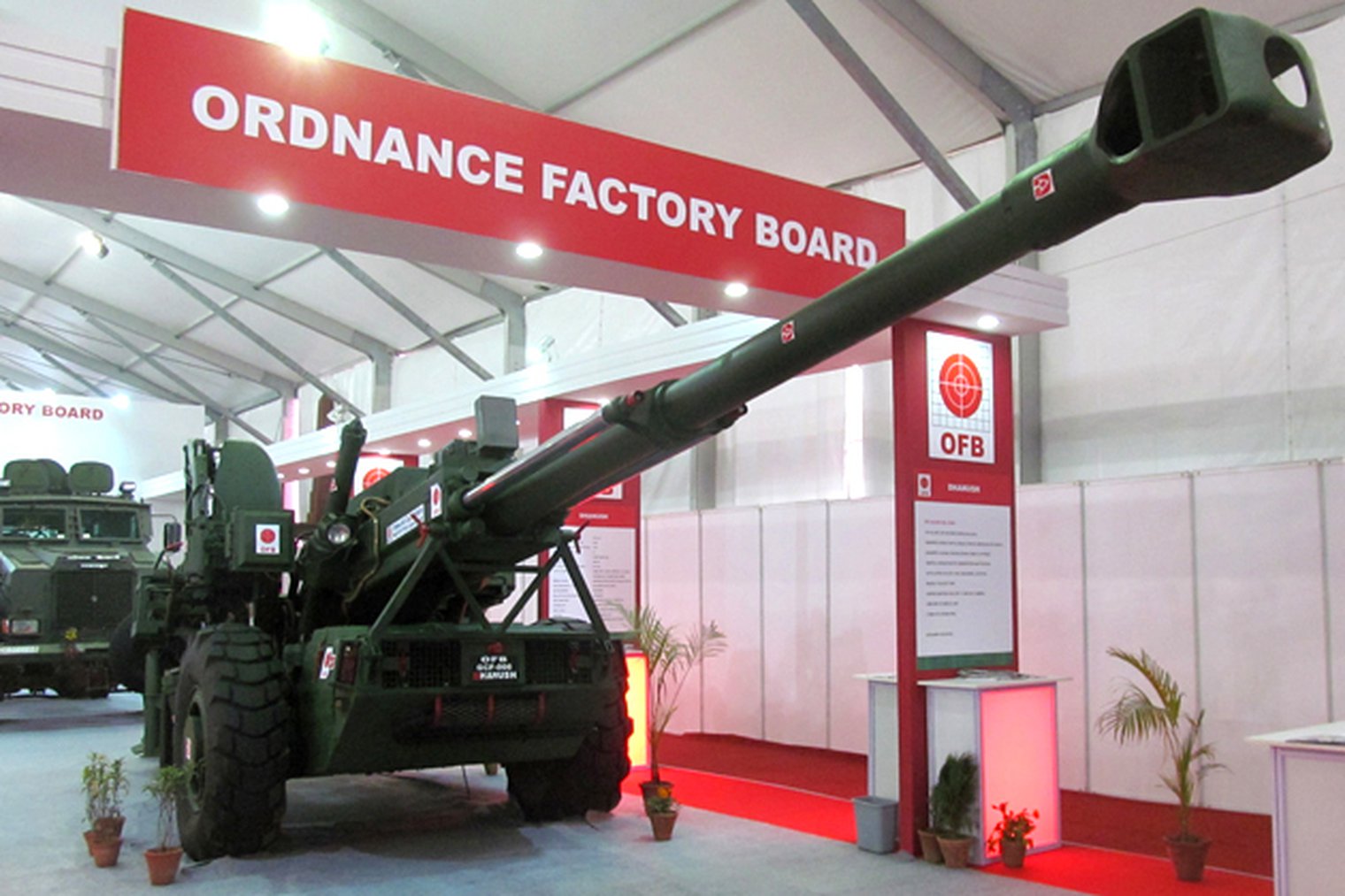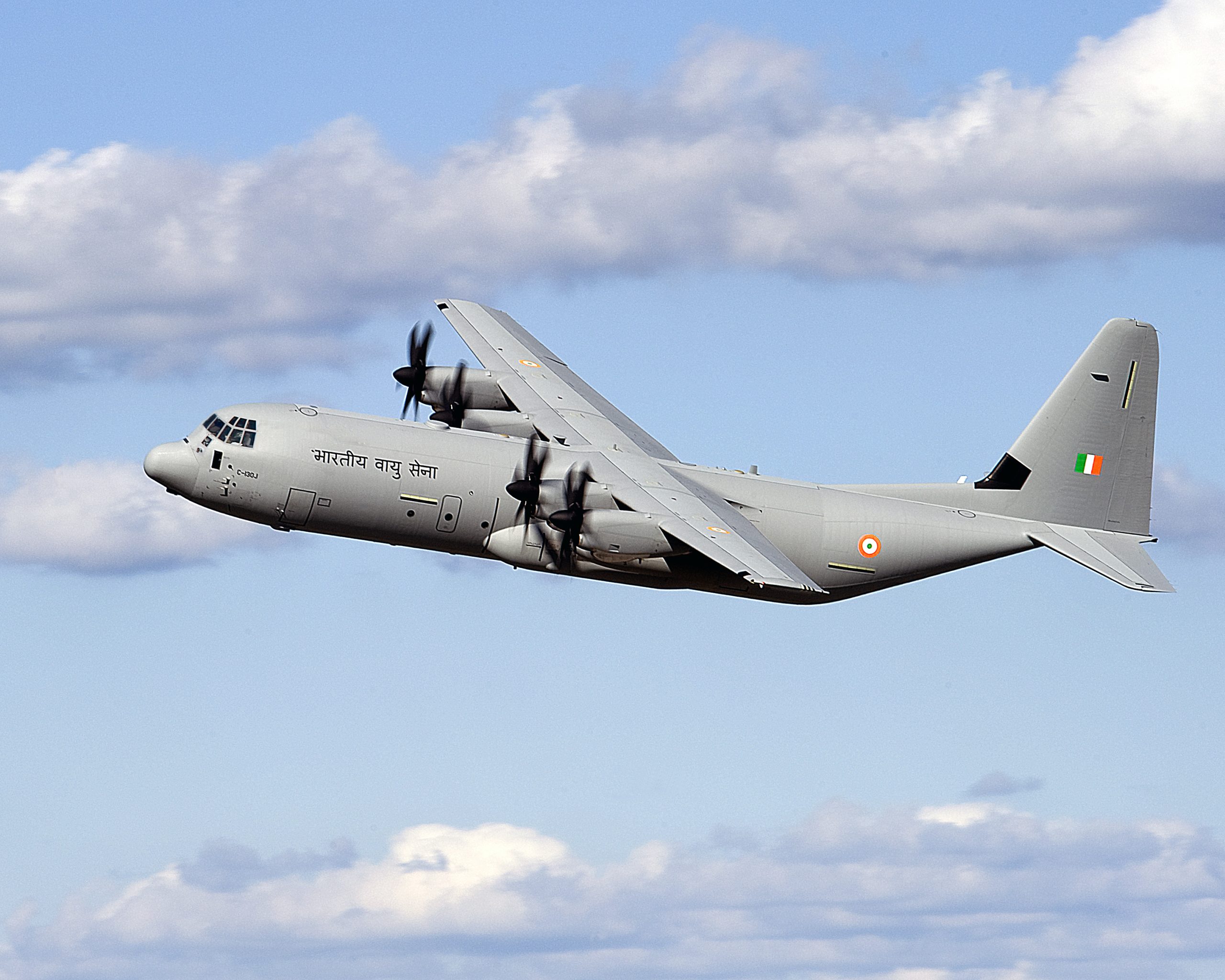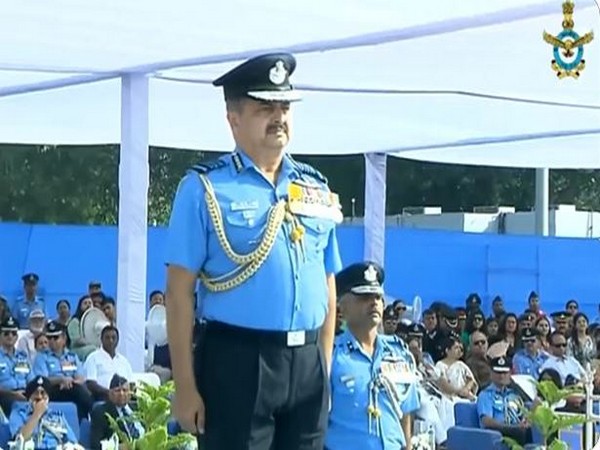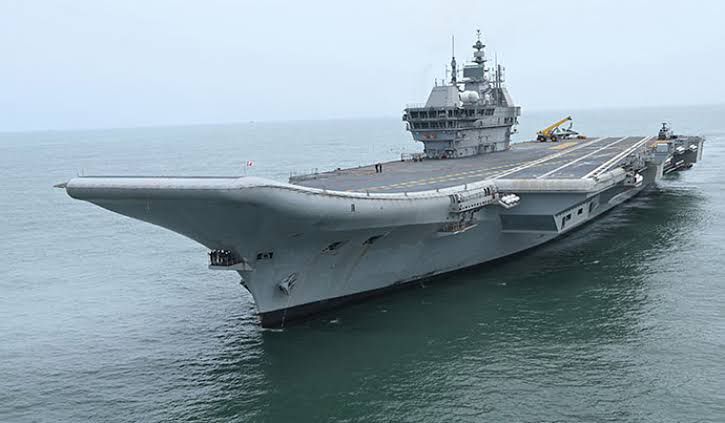
Optimisation of Ordnance Factory Board
Tue, 20 Oct 2020 | Reading Time: 8 minutes

As an entity set up in 1979 to manufacture ammunition and explosives, weapons, vehicles and equipment, materials and components, armoured vehicles and ordnance equipment, the Ordnance Factory Board (OFB) today comprises 41 factories, 9 training institutions, 3 marketing centres and 4 regional controllers of safety. It is manned by a workforce of 82,000 apart from a cadre of IOFS and IOFTS comprising approximately 1700 officers. Given that the OFB is an attached organization under the Department of Defence with the Army, Air Force and the Navy as its prime customers and has been part of all the major wars of post-independence India, it is pertinent to reflect why its ‘restructuring’, ‘modernization’ and, of late, ‘corporatization’ been an issue for policymakers.
Between 2000 and 2020 there have been at least 2 reviews of its functioning resulting in calls for its reorganization/restructuring/corporatization. The TKA Nair Committee (2000) proposed the establishment of an OF Corporation Ltd; the Vijay Kelkar Committee (2004) also proposed corporatization of OFB to address issues of obsolescence and improving access to technology; the Raman Puri Committee on indigenisation (2015) proposed, inter alia, the establishment of 3 or 4 entities as DPSUs and the most recent Shekatkar Committee (2016) also addressed the issue of defence manufacturing and suggested corporatisation of OFB.
The Indian Army, which is primarily the OFB’s major customer, especially the Artillery and the Infantry, has flagged the OFB regularly for reasons of quality assurance, improvement of safety standards, timely supplies and costs. For an organization that prides itself on having met the requirements of the Army through all major post-independence wars, these calls are demotivating and touch a raw nerve.
The Department of Defence Production (DDP) as its administrative department finds itself in a difficult position. As the facilitating interface between the customer (armed forces) and the suppliers (OFB, Defence Public Sector Units or DPSUs and Industry) it promotes the Make in India initiative of the Government under the Defence Production Policy (DPP). It has actively promoted the ‘Buy-and-Make India’ option emphasizing Indigenization through the domestic industry. Several recent initiatives such as making available facilities of the Directorate General of Quality Assurance (DGQA) to industry, the establishment of a Defence Innovation Fund and undertaking of Defence India Start-Up Challenges (DISCs). The removal of 275 items from the core to the non-core list in 2017-18 was one of the steps intended to enable the OFB to focus on the core items and achieve better quality standards.
The DDP had submitted a Cabinet Note in August 2019 proposing corporatization of the OFB. The COVID 19 pandemic revival package of the government has set the ball rolling with some seriousness now. KPMG has been appointed as the consultant to propose a road map and to oversee its implementation with a 6 month time frame for each. While its recommendations are awaited, we must get all stakeholders on board for a coherent road map.
“Optimisation” of OFBs is perhaps a more encompassing term and suggests a more holistic approach to the issue. For one thing, it does not throw the baby out with the bathwater, acknowledging the role and relevance of the Ordnance Factories (OFs). It, however, acknowledges the necessity for ushering in change and the need to build on current strengths. In other words, it would appear to suggest optimal utilisation of the existing infrastructure and human capital. It is essential to consider what the objective of the proposed optimisation is and why it is felt necessary?
Corporatisation of OFB per se should not be considered a panacea for turning the OFs around. There are 9 other DPSUs which are corporatized entities several of which have been or are currently been disinvested. Will the OFs run this risk sooner or later? After all, the argument for creating the DPSUs outside the government structure was justified on the same grounds of financial and functional autonomy, attracting the best talent at market rates, flexibility in investments to promote acquisition of technology, retention and ploughing back of profits for modernization, promoting exports, etc. Can the OFs live up to similar expectations which appear attractive and promising on paper? Or will there be demands for disinvestment in years to come? Will functional autonomy be the selling point to unions and staff associations to secure their buy-in?
The issue needs to be viewed in the larger perspective of India’s quest for military prowess and creating India as an Asian manufacturing powerhouse, in which defence will play a significant role. From the pure defence perspective, modernization of defence manufacturing to achieve self-reliance is an absolute imperative. India’s defence budget is 2.3 % of its GDP (2019-20). It is 3rd in terms of arms imports according to the SIPRI report (2020), amounting to a whopping 71.1 billion USD which is estimated to approximately 15% of global arms imports. India’s domestic manufacturing accounts for approximately 25% of the total allocation in the Budget of USD 62.85 bn for 2020-21. The Prime Minister’s announcement of a 5 trillion USD economy by 2025 banks heavily on domestic defence manufacturing picking up the tempo with the Atma Nirbhar Bharat initiative facilitating import substitution in a big way since imports constitute a fair share in the current manufacturing scenario. Self-reliance in defence without indigenization in defence manufacturing will remain a distant dream.
Optimising of OFs will open several opportunities. Apart from freeing it from the confines of governmental procedures and the Government Financial Rules (GFR), it will enable it to plough back profits which otherwise accrue at present to the Consolidated Fund of India (CFI). It will facilitate the inflow of capital and modernise processes and upgrade skills through collaboration with the private sector. Finally, it will lead to greater quality consciousness, design and product packaging which will result in improved competitiveness in a liberalised market. The OFB will be able to utilize its existing infrastructure and workforce better if it considers JVs with industries which are factory specific and product centred. There is no reason why OFs cannot be made into profit centres which compete for FDI also under the existing regime. Acquisition of and collaboration with factories in friendly foreign countries can also be considered.
Optimisation of OFBs is an idea whose time has finally come. The threats from the strategic neighbourhood have increased. Government is committed to scaling up defence manufacturing and has revised the defence procurement procedures. An Import Embargo List of nearly 100 defence weapons and platforms having been published with effect from December 2020, the time is opportune for the optimisation process to commence. It will create the right environment for JVs and investments which will also help the economy to stand firmly on its feet. With the Buy Indian option as its focus and the Indian Designed, Developed & Manufactured (IDDM) option as the default option, OFs will emerge as key entities.
So, what are the options for optimisation?
- Grant of autonomy in functioning should result in the OFB reorganizing its factories into cohesive groups, even if it results in reducing the number of factories. OFs will need to be grouped together based upon the products they manufacture and/or similarities of operations. They must focus on core activities and draw up plans of reskilling of employees. A scheme of a Golden Handshake for certain categories and profiles of employees must not be ruled out as a one-time measure for which the Government must support the OFB.
- OFB should be allowed to monetize its land assets and offer it as equity in Public-Private Partnership based models of manufacturing including Joint Ventures. The government should stipulate that such entities shall manufacture specific defence related items and fix a cap on prices. Other activities such as hospitals and schools should be hived off to more professional entities with the relevant expertise through a transparent system while retaining safeguards for the employees. For example, Hospitals can be linked to the CGHS system or other hospital chains and Schools can be linked similarly to the Kendriya Vidyalaya Sangathan (KVS) or School systems.
- OFB and JVs should focus on vendor development for assemblies, sub-assemblies and components in industry clusters including the two Defence Corridors. The government should proactively establish common facilitation centres for quality assurance and testing in these areas (including through a PPP route with DGQA). Active association with Industry and academia to promote skill development should be promoted to meet the re-skilling needs of the OFB’s manpower as well as that of industry. The National Skill Development Council should facilitate a Defence Sector Skill Council which could utilize the existing infrastructure of the 9 Training Institutes under the OFB.
- Optimisation may consider corporatisation of the OFB as an option. It should not be seen as a solution merely for bringing in the much-needed investment for modernization. JVs are not new to OFBs. The Shaktiman trucks, manufactured at Jabalpur, were a result of collaboration with MAN of Germany and the Jonga jeeps were manufactured under collaboration with Nissan Corp of Japan. The latest collaboration is with the Kalashnikov Corp of Russia for the manufacture of the AK series of assault rifles. Corporatisation should look beyond governmental financial regulations and towards greater competitiveness, better managerial and technical expertise, efficiency and reliability of equipment and ammunition. It should also promote accountability within the system through transparent norms that obviate the pointing of fingers. The defence of India cannot be hostage to such petulance and turf wars.
- Government will, however, need to provide some hand-holding support in terms of funds, consultants and certain moratoriums. For example, OFB should be supported through a professionalized committee to get its land and other assets valued in order to ensure that the best value is leveraged. An Empowered Committee to oversee this transition comprising retired representatives from the armed forces and government, including finance, apart from the OFB itself could be considered for a defined time frame.
- A considered transition plan of at least three years should be drawn up incorporating a framework of supervision from all stakeholders, including the PPP partner and Army, should be devised to enable adherence to these objectives. Financial assistance for certain defined activities for the transition should be provided by the government. This is essential to ensure that the defence of India is not compromised in the process
- There is also the need to address the political aspect of such a major exercise. The OFB’s manpower of approximately 82,000 workmen and 1700 officers are today split into 3 major unions for the workmen (affiliated to political parties of the Left, Right and Centre persuasion) and to associations for various clerical, supervisory and officer cadres. An open and engaged dialogue with them will promote ownership rather than apprehensions about the optimisation exercise. Calls for strikes and industrial action will be counterproductive to this exercise otherwise.
There are several models of optimisation that can be considered. KPMG will no doubt examine them. Let me mention two in this context. The Royal Ordnance Factories in the UK were corporatized in 1985 by Margaret Thatcher. Initially converted into a private limited company, the Royal Ordnance plc, it was merged in 1987 with British Aerospace. In the 1990s, following a series of mergers and acquisition, it took shape as BAe Systems. An example from closer home is the Oil and Natural Gas Commission, which was established in 1956, was corporatized in 1994 and is today a listed company which is also the holding company for the ONGC Videsh (OVL). In both cases, the timing was just right in that the respective sectors benefitted from opportunities that were opening up for them. Introduction of professional HR policies, financial and commercial policies have been resultant benefits which have benefitted the companies and their employees.
Technology assimilation in OFs will remain a challenge. The OFB has largely been undertaking licensed production and engaged in semi or complete knockdown assemblies. Foreign OEMs have traditionally been wary of transferring technology to them. The low expenditure on R&D by the OFB, which has been less than 1% of its turnover, has not helped. Its poor record in vendor development has also not helped in achieving import substitution. A vendor base of approx. 5000 despite 11 Ordnance Development Centres is a poor record. OFs should proactively reduce import dependency by reducing import content in the value of the issue. It is expected that once shaken out of the cocoon of the complacency of operating on a ‘No profit, no loss’ basis which transfers inefficiencies of high labour and material costs with nearly 25% overheads to the price charged, there will be some resultant competitiveness. A shift from an attached office of the DDP status to a more commercial accounting system will, however, be essential.
Reforms in the defence sector have traditionally been slow and laborious. At the best of times, the military has been very conservative and cautious in its approach to change, given its onerous mandate and its hierarchy bound command and control structures. The adoption and adapting to change require several iterative processes as it has to be both based upon felt needs and organic in content. ‘Optimising’ is a much better approach as it moves beyond the rhetoric of the blame game to one of constructive suggestions and from historical analysis to practical suggestions for the future. Mere intent will not work.
Disclaimer
The opinions expressed in this article are the author’s own and do not reflect the views of Chanakya Forum. All information provided in this article including timeliness, completeness, accuracy, suitability or validity of information referenced therein, is the sole responsibility of the author. www.chanakyaforum.com does not assume any responsibility for the same.
Chanakya Forum is now on . Click here to join our channel (@ChanakyaForum) and stay updated with the latest headlines and articles.
Important
We work round the clock to bring you the finest articles and updates from around the world. There is a team that works tirelessly to ensure that you have a seamless reading experience. But all this costs money. Please support us so that we keep doing what we do best. Happy Reading
Support Us




















POST COMMENTS (0)